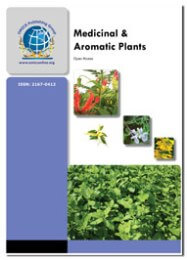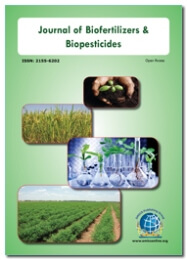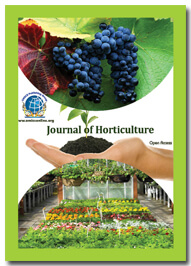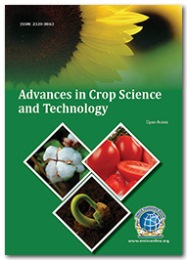Theme: Frontiers in plant genomics : From discovery to applications
Plant Genomics Summit 2017


Dr Grace Chen, PhD
Research Plant Physiologist
U.S. Dept. of Agriculture, ARS, WRRC
U.S.A
Welcome Message from the 7th World Summit on Plant Genomics
Dear Colleagues & Fellow Researchers,
As a member of the organizing committee, it is my great pleasure to welcome you to the 7th World Summit on Plant Genomics, July 03-05, 2017 at Bangkok, Thailand.
The theme of Plant Genomics 2017, ‘Frontiers in plant genomics: From discovery to applications’, covers both theoretical and practical areas of plant science. Fields of interest include, but are not limited to: gene structure and function, molecular biology and genetics, tissue culture and biotechnology, crop breeding and disease resistance, and plant stem cells.
Plant Genomics 2017 will be a valuable and important platform for inspiring international and interdisciplinary exchange at the forefront of basic and applied research on plant science. The Conference will strive to offer plenty of networking opportunities, providing you with the opportunity to meet and interact with the leading scientists and researchers, friends and colleagues as well as sponsors and exhibitors.
The conference itself will be held at Bangkok, one of most modern cities in Asia. Bangkok offers prestige cultural, historical and indigenous attractions, family oriented facilities, varied shopping opportunities and more. We are sure that you will enjoy your stay in Bangkok apart from gaining knowledge and innovation from the conference.
Everyone can avail this opportunity by submitting the abstracts
at: http://plantgenomics.conferenceseries.com/abstract-submission.php
We look forward to seeing you in Bangkok.
Dr Grace Chen, PhD
Research Plant Physiologist
U.S. Dept. of Agriculture, ARS, WRRC
U.S.A
Track 1: Plant Tissue Culture
Plant cells can be grown in isolation from intact plants in tissue culture systems. The cells have the characteristics of callus cells, rather than other plant cell types. These are the cells that appear on cut surfaces when a plant is wounded and which gradually cover and seal the damaged area .Tissue culture cells generally lack the distinctive features of most plant cells. Plant tissue cultures can be initiated from almost any part of a plant. The physiological state of the plant does have an influence on its response to attempts to initiate tissue culture. The source, termed explant, may be dictated by the reason for carrying out the tissue culture. Some of societies associated with Plant Tissue Culture includes, Different types of plants garden plants, evergreen plants, house plants, shade plants.
Related Conferences: 2nd International Conference on Plant Physiology June 26-28, 2017 Bangkok, Thailand; 5th International Conference on Cancer Genomics August 08-09, 2016 Las Vegas, Nevada, USA, UK; 9th International Conference on Genomics and Pharmacogenomics June 15-16, 2017 London, UK; International Conference on Green Energy November 28-30, 2016 Atlanta, USA; Plant Biology 2017 July 9-13 Austin, Texas; 5th Pan American Plants and Bio Energy Meeting August 4-7, 2017, Sante Fe, New Mexico;Plant Genomics Congress September 12-13, 2017 Philadelphia, USA; Plant Biology Europe: EPSO/FESPB 2016 Congress June 26-30, 2017 Prague, Czech Republic; WISP Course on wheat genetics November 21-23. 2016 John Innes Centre, Norwich, UK;
International Society for Plant Pathology, American Society of Plant Biologists (ASPB),Australian Society of Plant Scientists (ASPS), Argentinean Society of Plant Physiology (SAFV), American Society of Agronomy (ASA), African Crop Science Society (ACSS), Brazilian Society of Plant Physiology (SBFV)
Track 2: Plant Stem Cells
Plants have emerged as powerful production platforms for the expression of fully functional recombinant mammalian proteins. These expression systems have demonstrated the ability to produce complex glycoproteins in a cost-efficient manner at large scale. The full realization of the therapeutic potential of stem cells has only recently come into the forefront of regenerative medicine. Stem cells are programmed cells that can differentiate into cells with specific functions. Regenerative therapies are used to stimulate healing and might be used in the future to treat various kinds of diseases. Regenerative medicine will result in an extended healthy life span. A fresh apple is a symbol for beautiful skin. Hair greying for example could be shown to result from the fact that the melanocyte stem cells in the hair follicle have died off.
Related Conferences: Conference on Plant Physiology June 09-11, 2017 Dallas, USA ; Global Summit on Plant Science September 21-23, 2017 San Antonio, USA; 9th International Conference on Genomics and Pharmacogenomics June 15-16, 2017 London; Conference on Green Energy and Expo September 21-23, 2017 Orlando, FL,USA; Plant Breeding Congress and EUCARPIA-Oil and Protein Crops Section Conference November 01-05, 2017 Antalya ,Turkey; Conference on Rye Breeding and Genetics June 24 – 26, 2017 WrocÅ‚aw, Poland; Congress of Plant Molecular Biology(IPMB) October 25 - 30, 2017 Foz do Iguazu, Brazil; Plant Genomics Congress September 14-15, 2017 St. Louis, USA; XVIth Meeting of the EUCARPIA Section Biometrics in Plant Breeding September 9-11, 2017 Wageningen, the Netherlands
Crop Science Society of America (CSSA), Crop Science Society of China (CSSC),European Association for Research on Plant Breeding (EUCARPIA) Chile’s National Network of Plant Biologists (CNNPB), Chinese Society of Plant Biology (CSPB), African Crop Science Society (ACSS), Brazilian Society of Plant Physiology (SBFV), Botanical Society of China (BSC)
Track 3: Plant Sciences
Plant cells are immobile, encased in a rigid cell wall. Unlike animal cells, migration and programmed cell death play little role in the patterning of plant cell fates, nor can they move when their environment changes. If the supply of food is low or if there is a predator, animals can move, fight or fly. But plants cannot. They have to adapt constantly to their environment and their development is highly plastic. Animal development is mainly embryonic the body shape is defined during embryogenesis and the adult derive from the enlargement of the embryo. In contrast, in plants, indoor plants, succulent plants, hibiscus plant, exotic plants, water plants, aloe Vera plants, most of the development occurs post embryonically and never ceases. In fact, because plants can't escape from their physical locations, they adapt and "escape" through development. When there is a lack of nutrients or energy, the plant develops its root system to explore the ground or its aerial system to get some light. Under attack from a pathogen or herbivore, the plant is able to synthesize signaling molecules to change its development and defend itself
Related Conferences: Conference on Plant Physiology June 09-11, 2017 Dallas, USA ; Global Summit on Plant Science September 21-23, 2017 San Antonio, USA; Conference on Agriculture and Horticulture June 27-29, 2017 Cape Town, South Africa ; 9th International Conference on Genomics and Pharmacogenomics June 15-16, 2017 London; Conference on Green Energy and Expo September 21-23, 2017 Orlando, FL,USA; Conference on Rye Breeding and Genetics June 24 – 26, 2017 WrocÅ‚aw, Poland; Foz do Iguazu, Brazil; ; XVIth Meeting of the EUCARPIA Section Biometrics in Plant Breeding September 9-11, 2017 Wageningen, the Netherlands.
Australian Society of Plant Scientists (ASPS),Argentinean Society of Plant Physiology (SAFV), American Society of Agronomy (ASA)Crop Science Society of China (CSSC),European Association for Research on Plant Breeding (EUCARPIA) Crop Science Society of America (CSSA), Protein research foundation, World health organization, ), African Crop Science Society (ACSS), Brazilian Society of Plant Physiology (SBFV), Botanical Society of China (BSC),
Track 4: Plant Breeding
Plant breeding is the science of maximizing positive genetic traits in plants that people grow. It consists of analytical frameworks that allow researchers to create and select plants that are consistently outstanding in desired traits. The central objective in plant breeding is to improve the genetic basis of commercial crop species to comply with changing demands on yield and quality. Statistics plays a key role in modern plant breeding. A classical quantitative genetic model writes the phenotype as an outcome of genetic, environmental and genotype by environment interaction effects. In the genomic era, this classical model has been extended and generalized. Linear mixed models played an important role in classical quantitative genetics and still do so in modern genetics. The availability of genomic tools and resources is leading to a new revolution of plant breeding, as they facilitate the study of the genotype and its relationship with the phenotype, in particular for complex traits.
Related Conferences: 5th International Conference on Agriculture & Horticulture, June 27-29, 2017, Cape Town, South Africa; 7th Global Summit on Agriculture & Horticulture, October 17-19 2017, Kuala Lumpur, Malaysia; 6th Agriculture Industry and Machinary Congress, September 26-28, 2017, Miami, USA; 2nd Global Summit on Plant Science, October 31-November 02, 2016, Baltimore, USA; ISTA Seed Symposium, June 15-17 2017, Tallinn, Estonia; Congress Combined Crops, Soils, Horticulture and Weeds January 18-21 2017, Free State, Bloemfontein; 18th International Conference on Agronomy and Crop Sciences, September 15-16 2017, Rome, Italy; 7th International Crop Science Congress, August 14-19 2017, Beijing China. Crop Science Society of America.
Australian Society of Plant Scientists (ASPS),Argentinean Society of Plant Physiology (SAFV), American Society of Agronomy (ASA), African Crop Science Society (ACSS), Brazilian Society of Plant Physiology (SBFV), Botanical Society of China (BSC), Canadian Society of Plant Biologists (CSPB), Chile’s National Network of Plant Biologists (CNNPB), Chinese Society of Plant Biology (CSPB), Crop Science Society of America (CSSA), Crop Science Society of China (CSSC),European Association for Research on Plant Breeding (EUCARPIA)
Track 5:Transgenic Plants
Over the last 30 years, the field of genetic engineering has developed rapidly due to the greater understanding of deoxyribonucleic acid (DNA) as the chemical double helix code from which genes are made. The term genetic engineering is used to describe the process by which the genetic makeup of an organism can be altered using “recombinant DNA technology.” This involves the use of laboratory tools to insert, alter, or cut out pieces of DNA that contain one or more genes of interest. Genetic engineering techniques are used only when all other techniques have been exhausted, i.e. when the trait to be introduced is not present in the germplasm of the crop, plant like indoor plants, succulent plants, water plants, shade plants, house plants, cloning plants, carnivorous plants.
Related Conferences: 2nd International Conference on Plant Physiology June 26-28, 2017 Bangkok, Thailand; 2nd Global Summit on Plant Science, October 06-08, 2016 Crowne Plaza, Heathrow, London, UK; 9th International Conference on Genomics and Pharmacogenomics June 15-16, 2017 London, UK; International Conference on Green Energy November 28-30, 2016 Atlanta, USA; Plant Biology 2017 July 9-13 Austin, Texas; 5th Pan American Plants and Bio Energy Meeting August 4-7, 2017, Sante Fe, New Mexico;Plant Genomics Congress September 12-13, 2017 Philadelphia, USA; Plant Biology Europe: EPSO/FESPB 2016 Congress June 26-30, 2017 Prague, Czech Republic; WISP Course on wheat genetics November 21-23. 2016 John Innes Centre, Norwich, UK; International Society for Plant Pathology.
American Society of Plant Biologists (ASPB), Australian Society of Plant Scientists (ASPS), Argentinean Society of Plant Physiology (SAFV), American Society of Agronomy (ASA),African Crop Science Society (ACSS), Brazilian Society of Plant Physiology (SBFV)
Track 6:Plant Genetic Engineering
Plant Genetic Engineering has created hereditary recombination procedures to control quality arrangements in plants express particular characteristics. Applications for hereditary building are expanding as architects and researchers cooperate to distinguish the areas and elements of particular qualities in the DNA grouping of different plants. Once every quality is characterized, engineers create approaches to change them to make living beings that give advantages, plastics-producing microbes, and pest-resistant crops.
Related Conferences: 9th International Conference on Genomics and Pharmacogenomics June 15-16, 2017 London, UK; International Conference on Green Energy November 28-30, 2016 Atlanta, USA; Plant Biology 2017 July 9-13 Austin, Texas; 5th Pan American Plants and Bio Energy Meeting August 4-7, 2017, Sante Fe, New Mexico; Plant Biology 2017 July 9-13 Austin, Texas; 5th Pan American Plants and Bio Energy Meeting August 4-7, 2017, Sante Fe, New Mexico;Plant Genomics Congress September 12-13, 2017 Philadelphia, USA
Botanical Society of China (BSC), Canadian Society of Plant Biologists (CSPB), Chile’s National Network of Plant Biologists (CNNPB), Chinese Society of Plant Biology (CSPB), Crop Science Society of America (CSSA), Crop Science Society of China (CSSC),European Association for Research on Plant Breeding (EUCARPIA)
Track 7: Plant Epigenetics
A number of epigenetic phenomena were discovered in plants, but are not limited to plants. For instance, paramutation describes the heritable change in expression status of an allele upon its exposure to an allele that has the same sequence but displays a different expression status. Plant biology has made to the discovery and study of epigenetic phenomena, plants provide ideal systems for epigenomics research. Epigenomic modifications alter gene expression without changing the letters of the DNA alphabet (A-T-C-G), providing cells with an additional tool to fine-tune how genes control the cellular machinery. By understanding epigenomic alterations in plants, scientists may be able to manipulate them for various purposes, including biofuels and creating crops that can withstand stressful events such as drought some of societies associated with Plant Epigenetics
Related Conferences: Conference on Plant Physiology June 09-11, 2017 Dallas, USA ; Global Summit on Plant Science September 21-23, 2017 San Antonio, USA; Conference on Agriculture and Horticulture June 27-29, 2017 Cape Town, South Africa ; 9th International Conference on Genomics and Pharmacogenomics June 15-16, 2017 London; Conference on Green Energy and Expo September 21-23, 2017 Orlando, FL,USA; Conference on Rye Breeding and Genetics June 24 – 26, 2017 WrocÅ‚aw, Poland; Congress of Plant Molecular Biology(IPMB) October 25 - 30, 2017 Foz do Iguazu, Brazil; USA; XVIth Meeting of the EUCARPIA Section Biometrics in Plant Breeding September 9-11, 2017 Wageningen, the Netherlands
includes American Society of Plant Biologists (ASPB), Australian Society of Plant Scientists (ASPS),Argentinean Society of Plant Physiology (SAFV), American Society of Agronomy (ASA), African Crop Science Society (ACSS), Brazilian Society of Plant Physiology (SBFV), Botanical Society of China (BSC), Canadian Society of Plant Biologists (CSPB), Chile’s National Network of Plant Biologists (CNNPB),
Track 8: Plant Genome Sequencing
Plant Genomics researchers have readily embraced new algorithms, technologies and approaches to generate genome, transcriptome and epigenome datasets for model and crop species that have permitted deep inferences into plant biology. When a species’ reference genome is available, whole-genome resequencing is an efficient approach for discovering genes, SNPs, and structural variants, while simultaneously determininggenotypes. Information from these studies will fill in the gaps that exist in the genetic maps of many plant species, improving plant breeding and selection, and enabling definitive comparative genomic analyses within and across species and few associations includes
Related Conferences: 2nd International Conference on Plant Physiology June 26-28, 2017 Bangkok, Thailand; 2nd Global Summit on Plant Science, October 06-08, 2016 Crowne Plaza, Heathrow, London, UK; 9th International Conference on Genomics and Pharmacogenomics June 15-16, 2017 London, UK; International Conference on Green Energy November 28-30, 2016 Atlanta, USA; Plant Biology 2017 July 9-13 Austin, Texas; 5th Pan American Plants and Bio Energy Meeting August 4-7, 2017, Sante Fe, New Mexico;Plant Genomics Congress September 12-13, 2017 Philadelphia, USA; Plant Biology Europe: EPSO/FESPB 2016 Congress June 26-30, 2017 Prague, Czech Republic; WISP Course on wheat genetics November 21-23. 2016 John Innes Centre, Norwich, UK; International Society for Plant Pathology.
The Australian biotechnology association, European federation of biotechnology ,European molecular biology laboratory, The human genome variation society,Human Proteome Organisation, The centre for genetic engineering and biotechnology, Protein research foundation, World health organization
Track 9: Agricultural Bioinformatics
Bioinformatics is both an umbrella term for the body of biological studies that use computer programming as part of their methodology, as well as a reference to specific analysis "pipelines" that are repeatedly used, particularly in the field of genomics. Common uses of bioinformatics include the identification of candidate genes and nucleotides. Often, such identification is made with the aim of better understanding the genetic basis of disease, unique adaptations, desirable properties or differences between populations. In a less formal way, bioinformaticsalso tries to understand the organizational principles within nucleic acid and protein sequences.
Related Conferences: 2nd World Congress on Molecular Genetics and Gene Therapy July 3-5, 2017 Bangkok, Thailand; 2nd Global Summit on Plant Science, October 06-08, 2016 Crowne Plaza, Heathrow, London, UK; 7th Global Summit on Agriculture & Horticulture, October 17-19 2017, Kuala Lumpur, Malaysia; 6th Agriculture Industry and Machinary Congress, September 26-28, 2017, Miami, USA; 2nd Global Summit on Plant Science, October 31-November 02, 2016, Baltimore, USA; ISTA Seed Symposium, June 15-17 2016, Tallinn, Estonia; Combined Crops, Soils, Horticulture and Weeds Congress 2016, January 18-21 2017, Free State, Bloemfontein; 18th International Conference on Agronomy and Crop Sciences, September 15-16 2017, Rome, Italy; 7th International Crop Science Congress, August 14-19 2017, Beijing China. Crop Science Society of America
The human genome variation society,Human Proteome OrganisationChile’s National Network of Plant Biologists (CNNPB), Chinese Society of Plant Biology (CSPB), Crop Science Society of America (CSSA), Crop Science Society of China (CSSC),European Association for Research on Plant Breeding (EUCARPIA)
Track 10: Plant Nutritional Genomics
Plant Nutritional Genomics gives an opportune outline of plant wholesome genomics, which is characterized as the collaboration between a plant's genome and its healthful attributes. The wise determination and rearing of fit-for-reason assortments of products will assume a tremendous part in meeting these targets, and advances in plant wholesome genomics will permit the maximum capacity of yield choice and reproducing techniques to be figured it out. Understanding plant sustenance and applying this learning is crucial to expanding crop generation to meet developing requests for nourishment. Genotypic methodologies, in view of harvest determination and reproducing have as of late profit by mechanical advances, including the fulfillment of plant genome sequencing ventures.
Related Conferences: 5th International Conference on Agriculture & Horticulture, June 27-29, 2017, Cape Town, South Africa; 7th Global Summit on Agriculture & Horticulture, October 17-19 2017, Kuala Lumpur, Malaysia; 6th Agriculture Industry and Machinary Congress, September 26-28, 2017, Miami, USA; 2nd Global Summit on Plant Science, October 31-November 02, 2016, Baltimore, USA; ISTA Seed Symposium, June 15-17 2016, Tallinn, Estonia; Combined Crops, Soils, Horticulture and Weeds Congress 2016, January 18-21 2017, Free State, Bloemfontein; 18th International Conference on Agronomy and Crop Sciences, September 15-16 2017, Rome, Italy; 7th International Crop Science Congress, August 14-19 2017, Beijing China.
Crop Science Society of America;Botanical Society of China (BSC), Canadian Society of Plant Biologists (CSPB), Chile’s National Network of Plant Biologists (CNNPB), Chinese Society of Plant Biology (CSPB), Crop Science Society of America (CSSA), Crop Science Society of China (CSSC),European Association for Research on Plant Breeding (EUCARPIA)
Track 11: Plant Genomics Applications
Recent technological advancements have substantially expanded our ability to analyze and understand plant genomes and to reduce the gap existing between genotype and phenotype. The fast evolving field of genomics allows scientists to analyze thousands of genes in parallel, to understand the genetic architecture of plant genomes and also to isolate the genes responsible for mutations. Model organisms provide genetic and molecular insights into the biology of more complex species. Since the genomes of most plant species are either too large or too complex to be fully analyzed, the plant scientific community has adopted model organisms. They share features such as being diploid and appropriate for genetic analysis, being amenable to genetic transformation, having a (relatively) small genome and a short growth cycle, having commonly available tools and resources, and being the focus of research by a large scientific community. Genomics will accelerate the application of gene technology to agriculture
Related Conferences: 2nd International Conference on Plant Physiology June 26-28, 2017 Bangkok, Thailand; 3rd Global Summit on Plant Science August 07-09, 2017 Rome, Italy; 5th International Conference on Agriculture and Horticulture June 27-29, 2017 Cape Town, South Africa ; 9th International Conference on Genomics and Pharmacogenomics June 15-16, 2017 London, UK; International Conference on Green Energy November 28-30, 2016 Atlanta, USA; Plant Biology 2017 July 9-13 Austin, Texas; 5th Pan American Plants and Bio Energy Meeting August 4-7, 2017, Sante Fe, New Mexico;Plant Genomics Congress September 12-13, 2017 Philadelphia, USA; Plant Biology Europe: EPSO/FESPB 2016 Congress June 26-30, 2017 Prague, Czech Republic; WISP Course on wheat genetics November 21-23. 2016 John Innes Centre, Norwich, UK; International Society for Plant Pathology; 2nd World Congress on Molecular Genetics and Gene Therapy July 3-5, 2017 Bangkok, Thailand
American Society of Plant Biologists (ASPB), Australian Society of Plant Scientists (ASPS), Argentinean Society of Plant Physiology (SAFV), American Society of Agronomy (ASA),African Crop Science Society (ACSS), Brazilian Society of Plant Physiology (SBFV)
Track 12: Mendilian Genetics
In the 1860’s, an Austrian monk named Gregor Mendel introduced a new theory of inheritance based on his experimental work with pea plants. Prior to Mendel, most people believed inheritance was due to a blending of parental ‘essences’, much like how mixing blue and yellow paint will produce a green colour. Mendel instead believed that heredity is the result of discrete units of inheritance, and every single unit (or gene) was independent in its actions in an individual’s genome. According to this Mendelian genetics concept, inheritance of a trait depends on the passing- one of these units.Mendelian Genetics is widely regarded as the corner stone of classical genetics. It is a set of primary beliefs relating to the transmission of hereditary characteristic from parent organisms to their offspring; it underlies much of genetics. Off spring is the product of You do not have access to view this node, a new organism produced by one or more parents
Related Conferences: Conference on Plant Physiology June 09-11, 2017 Dallas, USA ; Global Summit on Plant Science September 21-23, 2017 San Antonio, USA; 2nd World Congress on Molecular Genetics and Gene Therapy July 3-5, 2017 Bangkok, Thailand; 9th International Conference on Genomics and Pharmacogenomics June 15-16, 2017 London; Conference on Green Energy and Expo September 21-23, 2017 Orlando, USA; Plant Breeding Congress and EUCARPIA-Oil and Protein Crops Section Conference November 01-05, 2017 Antalya ,Turkey; Conference on Rye Breeding and Genetics June 24 – 26, 2017 WrocÅ‚aw, Poland; 3rd Annual Congress and Expo on Bioscience August 10-12, 2017 Beijing, China; 9th International Convention on Stem Cell and Biobanking October 23-24, 2017 Osaka, Japan; XVIth Meeting of the EUCARPIA Section Biometrics in Plant Breeding September 9-11, 2017 Wageningen, Netherlands.
Crop Science Society of China (CSSC),European Association for Research on Plant Breeding (EUCARPIA) Australian Society of Plant Scientists (ASPS), Argentinean Society of Plant Physiology (SAFV), American Society of Agronomy (ASA), Chile’s National Network of Plant Biologists (CNNPB), Chinese Society of Plant Biology (CSPB), Crop Science Society of America (CSSA),
Track 13: Plant Genomics in World Economy
The global market for genomics is expected to reach USD 22.1 billion by 2020, growing at an estimated CAGR of 10.3% from 2014 to 2020, according to a new study by Grand View Research, Inc. Genomics play an imperative role in the field of infectious disease testing by enabling the use of fast and effective result rendering molecular diagnostic tests. This, coupled with growing prevalence of infectious diseases and hospital acquired infections is expected to drive market growth during the forecast period. Other driving factors for this market include decreasing prices of DNA sequencing, increasing demand for genome analysis in animal and plant feedstock, extensive presence of both private and public external funding programs and growing patient awareness levels. Genomics based personalized medicine segment on the other hand is expected to grow at the fastest CAGR of over 12.0% from 2014 to 2020 due to increasing demand for population based therapeutic solutions and subsequent increase in R and D initiatives. Plant Genomics Market Size - $11.1 Billion in 2013, Market Growth - CAGR of 10.3% from 2014 to 2020, Market Trends - Growing demand for personalized medicine and the consequent rise in demand for genomics based R and D initiatives is expected to drive market growth during the forecast period
Related Conferences: 7th Global Summit on Agriculture & Horticulture, October 17-19 2017, Kuala Lumpur, Malaysia; 6th Agriculture Industry and Machinary Congress, September 26-28, 2017, Miami, USA; 2nd Global Summit on Plant Science, October 31-November 02, 2016, Baltimore, USA; ISTA Seed Symposium, June 15-17 2017, Tallinn, Estonia; Combined Crops, Soils, Horticulture and Weeds Congress 2016, January 18-21 2017, Free State, Bloemfontein; 18th International Conference on Agronomy and Crop Sciences, September 15-16 2017, Rome, Italy; 7th International Crop Science Congress, August 14-19 2017, Beijing China. Crop Science Society of America;
The Australian biotechnology association, European federation of biotechnology ,European molecular biology laboratory, The human genome variation society,Human Proteome Organisation, The centre for genetic engineering and biotechnology, Protein research foundation, World health organization
Track 14: Cereals and Crops
Comparison of the order of blocks within the different cereal chromosomes revealed that each cereal genome can be derived from the cleavage of a single structure, a hypothetical ‘ancestral’ genome, from which the genomes of present day cereals and grasses have evolved. The rice genome is one of the smallest among the cereals and grasses, and in 1995, we demonstrated that rice could be a model for cereals based on this ‘synteny’ because its genome can be divided into groups of genes - a series of genomic building blocks - from which the other larger cereal genomes can be constructed. The genome analysis will also help in our efforts for improvement of staple foods for yield and quality, which is a continuous process because neither the conditions of cultivation nor the genomes have to be targeted to the need of adaptations to a variety of biotic and abiotic stresses. Functional food components vary across the cereal crops and within different tissues of grain.
Related Conferences: 5th International Conference on Agriculture & Horticulture, June 27-29, 2017, Cape Town, South Africa; 7th Global Summit on Agriculture & Horticulture, October 17-19 2017, Kuala Lumpur, Malaysia; 6th Agriculture Industry and Machinary Congress, September 26-28, 2017, Miami, USA; 2nd Global Summit on Plant Science, October 31-November 02, 2016, Baltimore, USA; ISTA Seed Symposium, June 15-17 2017, Tallinn, Estonia; Combined Crops, Soils, Horticulture and Weeds Congress 2016, January 18-21 2017, Free State, Bloemfontein; 18th International Conference on Agronomy and Crop Sciences, September 15-16 2017, Rome, Italy; 7th International Crop Science Congress, August 14-19 2017, Beijing China.
Crop Science Society of America;Botanical Society of China (BSC), Canadian Society of Plant Biologists (CSPB), Chile’s National Network of Plant Biologists (CNNPB), Chinese Society of Plant Biology (CSPB), Crop Science Society of America (CSSA), Crop Science Society of China (CSSC),European Association for Research on Plant Breeding (EUCARPIA)
Track 15: Plant Pathology
Plant pathology is the scientific study of diseases in plants caused by pathogens (infectious organisms) and environmental conditions (physiological factors). Plant pathology also involves the study of pathogenidentification, disease etiology, disease cycles, economic impact, plant disease epidemiology, plant disease resistance, how plant diseases affect humans and animals, pathosystem genetics, and management of plant diseases. Plant pathology is an applied science that deals with the nature, causes and control of plant diseases in agriculture and forestry.
Related Conferences: 2nd International Conference on Plant Physiology June 26-28, 2017 Bangkok, Thailand; 2nd Global Summit on Plant Science, October 06-08, 2016 Crowne Plaza, Heathrow, London, UK; 5th International Conference on Agriculture and Horticulture June 27-29, 2016 Cape Town, South Africa ; 9th International Conference on Genomics and Pharmacogenomics June 15-16, 2017 London, UK; International Conference on Green Energy November 28-30, 2016 Atlanta, USA; Plant Biology July 9-13, 2017 Austin, Texas; 5th Pan American Plants and Bio Energy Meeting August 4-7, 2017, Sante Fe, New Mexico;Plant Genomics Congress September 12-13, 2017 Philadelphia, USA; WISP Course on wheat genetics November 21-23. 2016 John Innes Centre, Norwich, UK.
International Society for Plant Pathology;Chile’s National Network of Plant Biologists (CNNPB), Chinese Society of Plant Biology (CSPB), Crop Science Society of America (CSSA), Crop Science Society of China (CSSC),European Association for Research on Plant Breeding (EUCARPIA) Crop Science Society of America (CSSA), Crop Science Society of China (CSSC).
Track 16: Plant Single cell Genomics
A large number of the recognizing elements of plants are inferable from the elements of profoundly concentrated cells. Transcriptomic investigation of these particular cells has essentially propelled our comprehension of key occasions in plant advancement, Tissue detail in the root and shoot or stomatal development. Tissue-particular profiling has likewise demonstrated that ecological conditions prompt to significantly extraordinary reactions in different cell sorts. Markers used to profile cells were to a great extent decided for their capacity to speak to anatomical elements and numerous essential inquiries would profit by an unprejudiced perspective of cell association. What's more, the full degree of cell variety because of biotic and abiotic burdens is not very much described, as various cells plainly react in an unexpected way.
Related Conferences: Conference on Plant Physiology June 09-11, 2017 Dallas, USA ; Global Summit on Plant Science September 21-23, 2017 San Antonio, USA; Conference on Agriculture and Horticulture June 27-29, 2017 Cape Town, South Africa ; 9th International Conference on Genomics and Pharmacogenomics June 15-16, 2017 London; Conference on Green Energy and Expo September 21-23, 2017 Orlando, FL,USA; Conference on Rye Breeding and Genetics June 24 – 26, 2017 WrocÅ‚aw, Poland; Congress of Plant Molecular Biology(IPMB) October 25 - 30, 2017 Foz do Iguazu, Brazil; USA; XVIth Meeting of the EUCARPIA Section Biometrics in Plant Breeding September 9-11, 2017 Wageningen, Netherlands.
American Society of Plant Biologists (ASPB), Australian Society of Plant Scientists (ASPS),Argentinean Society of Plant Physiology (SAFV), American Society of Agronomy (ASA), African Crop Science Society (ACSS), Brazilian Society of Plant Physiology (SBFV), Botanical Society of China (BSC), Canadian Society of Plant Biologists (CSPB), Chile’s National Network of Plant Biologists (CNNPB).
Track 17: Plant physiology
Plant physiology is a sub discipline of plant science worried with the working, or physiology, of plants. Closely related fields incorporate plant morphology (structure of plants), plant nature (associations with the earth), phytochemistry (organic chemistry of plants), cell science, hereditary qualities, biophysics and atomic science. Central procedures, photosynthesis, breath, plant sustenance, plant hormone capacities, tropisms, nastic developments, photoperiodism, photo morphogenesis, circadian rhythms, natural push physiology, seed germination, torpidity and stomata capacity and transpiration, both parts of plant water relations, are concentrated on by plant physiologists.
Related Conferences:5th International Conference on Agriculture & Horticulture, June 27-29, 2017, Cape Town, South Africa; 7th Global Summit on Agriculture & Horticulture, October 17-19 2017, Kuala Lumpur, Malaysia; 6th Agriculture Industry and Machinary Congress, September 26-28, 2017, Miami, USA; 2nd Global Summit on Plant Science, October 31-November 02, 2016, Baltimore, USA; ISTA Seed Symposium, June 15-17 2017, Tallinn, Estonia; Combined Crops, Soils, Horticulture and Weeds Congress 2016, January 18-21 2017, Free State, Bloemfontein; 18th International Conference on Agronomy and Crop Sciences, September 15-16 2017, Rome, Italy; 7th International Crop Science Congress, August 14-19 2017, Beijing China.
Crop Science Society of America;Botanical Society of China (BSC), Canadian Society of Plant Biologists (CSPB), Chile’s National Network of Plant Biologists (CNNPB), Chinese Society of Plant Biology (CSPB), Crop Science Society of America (CSSA), Crop Science Society of China (CSSC),European Association for Research on Plant Breeding (EUCARPIA)
Track 18: Seed genomics
Seed genomics, from fundamental seed science to handy applications in harvest science, gives a careful foundation comprehension of seed science from an essential science viewpoint. The field to cover three general subjects genomic ways to deal with considering seeds, genomic examination of fundamental seed science, and product seed genomics. From essential seed science to down to earth applications in product science, gives a careful foundation comprehension of seed science from a fundamental science point of view.
Related Conferences: Conference on Plant Physiology June 09-11, 2017 Dallas, USA ; Global Summit on Plant Science September 21-23, 2017 San Antonio, USA; 9th International Conference on Genomics and Pharmacogenomics June 15-16, 2017 London; Conference on Green Energy and Expo September 21-23, 2017 Orlando, FL,USA; Plant Breeding Congress and EUCARPIA-Oil and Protein Crops Section Conference November 01-05, 2017 Antalya ,Turkey; Conference on Rye Breeding and Genetics June 24 – 26, 2017 WrocÅ‚aw, Poland; Congress of Plant Molecular Biology(IPMB) October 25 - 30, 2017 Foz do Iguazu, Brazil; Plant Genomics Congress September 14-15, 2017 St. Louis, USA; XVIth Meeting of the EUCARPIA Section Biometrics in Plant Breeding September 9-11, 2017 Wageningen, the Netherlands
Crop Science Society of America (CSSA), Crop Science Society of China (CSSC),European Association for Research on Plant Breeding (EUCARPIA) Chile’s National Network of Plant Biologists (CNNPB), Chinese Society of Plant Biology (CSPB), African Crop Science Society (ACSS), Brazilian Society of Plant Physiology (SBFV), Botanical Society of China (BSC
ConferenceSeries Ltd invites all the participants from all over the world to attend ‘7th International Conference on Plant Genomics' during July 03-05, 2017 Bangkok, Thailand which includes prompt keynote presentations, Oral talks, Poster presentations and Exhibitions.
Plant Genomics 2017 is the premier event that brings together a unique and international mix of experts, researchers and decision makers both from academia and industry across the globe to exchange their knowledge, expertise and research innovations to build a world class plant genomics conference.
It’s our greatest pleasure to welcome you to the official website of ‘7th International Conference on Plant Genomics' that aims at bringing together the Professors, Researchers, scientists, Program developers to provide an international forum for the dissemination of original research results, new ideas and practical development experiences which concentrate on both theory and practices. The conference will be held in July 03-05, 2017 Bangkok, Thailand. The theme of the conference is around," Frontiers in Plant Genomics: From discovery to applications”. Featuring 3days of scientific workshop, special sessions, speaker & poster session, Industrial Expo. 300+ attendees from all over the world.
The event focuses on aspects such as breeding, molecular marker development, crop/ trait improvement, disease resistance, epigenetics, evolution studies and pathology as well understanding tools to overcome barrier and enable successful data analysis and management. Presentations concentrate not only particular to plant genomics but also crop and forestry research ranging from wheat, barley, maize and rice to potato, tomato, Arabidopsis, biofuels and various fruits. ConferenceSeries Ltd organizes a conference series of 1000+ Global Events inclusive of 300+ Conferences, 500+ Upcoming and Previous Symposiums and Workshops in USA, Europe & Asia with support from 1000 more scientific societies and publishes 700+ Open access journals which contains over 30000 eminent personalities, reputed scientists as editorial board members.
Why to attend???
With members from around the world focused on learning about Plant Genomics and its advances; this is your best opportunity to reach the largest assemblage of participants from the Plant Science and Genomics community. Conduct presentations, distribute information, meet with current and potential scientists, make a splash with new advancements and developments, and receive name recognition at this 2-day event. World-renowned speakers, the most recent techniques, developments, and the newest updates in Plant Genomics are hallmarks of this conference.
Target Audience:
- Plant Genomics Students, Scientists
- Plant Genomics Researchers
- Plant Genomics Faculty
- Agricultural Colleges
- Plant and Agriculture Associations and Societies
- Business Entrepreneurs
- Training Institutes
- Software developing companies
- Manufacturing Agricultural Devices Companies
Importance and scope
Plant genomics is a mounting and constantly evolving field of study, one which has gained much ground in past years through the development of advanced research and data management tools. Expert researchers explore the current issues and methodologies of this expanding field, specifically addressing areas of gene discovery and the functional analysis of genes with a target on the primary tools and sub-disciplines of genetic mapping, mRNA, protein and metabolite profiling. Plant genomics employ exciting new methods to investigate molecular plant breeding technology and gene functional analysis via transformation, mutation, protein function, and gene expression. The success of transgenic crops has erased the last vestiges of doubt about the value of agricultural biotechnology and triggered large-scale investments in plant genomics. The first genomics technology that was practiced on a large scale was sequencing the 5′ ends of cDNAs, to produce expressed sequence tags (ESTs).
Plant Genomics has roots in agriculture and Plant Genomics also has scope in agriculture fields, medicine, food production and textiles. It is the main source of food for human being. As well as we can get plant proteins, phytochemicals from plants, from medicinal plants some medicines are prepared and which can cure some fatal diseases. Form some recent study it is proved that plant antioxidant helps us to protect from free radical damage. By using Phytochemicals some cancer cell proliferation can be prevented at earlier stage. Beside that we can increase the nutrition value of plant by plant biotechnology and plant breeding. Now days green energy are used as non-conventional source of energy to reduce environmental pollution. So in human life Plant Genomics and plant oriented studies are very much important to sustain in this planet.
Value of Plant genomics to Agriculture and Society
Genomics will accelerate the application of gene technology to agriculture. this technology will enhance food security, by increasing productivity, and food safety, by eliminating Mycotoxins. There is a third benefit, derived from the first two: increased wealth. By accelerating the application of technology, genomics significantly increases the value of seeds and agricultural products. This increase adds much wealth to the customers, company owners, employees, and citizens of the nations in which genetic supply companies operate, and to both producing and importing nations whose food costs consequently are decreased.
Agricultural plant genomics should be publicly funded for several reasons. First, the DNA sequence of plants is necessary for continued low-cost, rapid progress to understand crops. As such, it is an essential resource for scientists in both the public and private sectors. Second, industry needs the public sector to create innovative methods for structuring and analysing databases, which can’t be done without access to genomics resources. Third, genomics is an equalizer in the research world.
Why Bangkok?
Bangkok is the capital and most populous city of Thailand. The city occupies 1,568.7 square kilometres (605.7 sq mi) in the Chao Phraya River delta in Central Thailand, and has a population of over 8 million, or 12.6 percent of the country's population. Over 14 million people (22.2 percent) live within the surrounding Bangkok Metropolitan Region, making Bangkok an extreme primate city, significantly dwarfing Thailand's other urban centres in terms of importance.
Bangkok's rapid growth amidst little urban planning and regulation has resulted in a haphazard cityscape and inadequate infrastructure systems. The city has since turned to public transport in an attempt to solve this major problem. Four rapid transit lines are now in operation, with more systems under construction or planned by the national government and the Bangkok Metropolitan Administration.
The agriculture in Thailand is highly competitive, diversified and specialised and its exports are very successful internationally. Rice is the country's most important crop. Thailand is a major exporter in the world rice market. Rice exports in 2014 amounted to 1.3 percent of GDP. Agricultural production as a whole accounted for an estimated nine percent of Thai GDP and 40 percent of the population works in agriculture-related jobs. Agriculture was able to expand during the 1960s and 1970s as it had access to new land and unemployed labour. Between 1962 and 1983, the agricultural sector grew by 4.1 percent a year on average and in 1980 it employed over 70 percent of the working population.Yet, the state perceived developments in the agricultural sector as necessary for industrialisation and exports were taxed in order to keep domestic prices low and raise revenue for state investment in other areas of the economy.
Bangkok welcomes more visitors than any other city in the world and it doesn’t take long to realise why. Bangkok is a city of contrasts with action at every turn; marvel at the gleaming temples, catch a tuk tuk along the bustling Chinatown or take a longtail boat through floating markets. Food is another Bangkok highlight, from local dishes served at humble street stalls to haute cuisine at romantic rooftop restaurants.
Luxury malls compete with a sea of boutiques and markets, where you can treat yourself without overspending. Extravagant Luxury hotels and surprisingly cheap serviced apartments welcome you with the same famed Thai hospitality. And no visit to Bangkok would be complete without a glimpse of its famous nightlife – from cabarets to exotic red-light districts, Bangkok never ceases to amaze.
Why to attend???
The significance of plants in human life is significant. Plants and plant products are essential for us. Food, energy, medicine and so many things we are able to get from plants. This conference seek to bring all such scientist, Noble Laureate, researcher, research scholar, students and people together who are involved in this field and provide them to discuss about their innovation, exchange ideas and interaction with each other.
Major Plant science Associations around the Globe
American Society of Plant Biologists (ASPB)
Australian Society of Plant Scientists (ASPS)
Argentinean Society of Plant Physiology (SAFV)
American Society of Agronomy (ASA)
African Crop Science Society (ACSS)
Brazilian Society of Plant Physiology (SBFV)
Botanical Society of China (BSC)
Canadian Society of Plant Biologists (CSPB)
Chile’s National Network of Plant Biologists (CNNPB)
Chinese Society of Plant Biology (CSPB)
Crop Science Society of America (CSSA)
Crop Science Society of China (CSSC)
European Association for Research on Plant Breeding (EUCARPIA)
European Plant Science Organisation (EPSO)
Federation of European Societies of Plant Biology (FESPB)
Genetics Society of China (GSC)
International Society of Plant Pathology (ISPP)
Indian Society of Plant Physiology (ISPP)
International Crop Science Society (ICSS)
International Society for Horticultural Science (ISHS)
Irish Plant Scientists' Association (IPSA)
International Society for Plant Molecular Biology (ISPMB)
Japanese Society for Plant Cell and Molecular Biology (JSPCMB)
Japanese Society of Plant Physiologists (JSPP)
Korean Society of Plant Biologists (KSPB)
New Zealand Society of Plant Biologists (NZSPB)

Target Audience:
The target audience will be Plant Biologist, Microbiologist, plant physiologist, agriculturalist plant pathologist, Molecular and cell biologist researcher or scientist who are researching in cancer biology and using plant product as cancer reducing agent.
Meet Your Target Market With members from around the world focused on learning about Plant Genomics, this is your single best opportunity to reach the largest assemblage of participants from the all Over the World. Conduct demonstrations, distribute information, meet with current, make a splash with a new product line, and receive name recognition at this 3-day event. World-renowned speakers, the most recent techniques, tactics, and the newest updates in Plant Science are hallmarks of this conference.
A Unique Opportunity for Advertisers and Sponsors at this International event:
http://plantgenomics.conferenceseries.com/sponsors.php
The global market for genomics is expected to reach USD 22.1 billion by 2020, growing at an estimated CAGR of 10.3% from 2014 to 2020, according to a new study by Grand View Research, Inc. Genomics play an imperative role in the field of infectious disease testing by enabling the use of fast and effective result rendering molecular diagnostic tests. This, coupled with growing prevalence of infectious diseases and hospital acquired infections is expected to drive market growth during the forecast period. Other driving factors for this market include decreasing prices of DNA sequencing, increasing demand for genome analysis in animal and plant feedstock, extensive presence of both private and public external funding programs and growing patient awareness levels. In addition, presence of untapped growth opportunities in emerging countries such as India, Brazil and China and the increasing health awareness are expected to serve this market as future growth opportunities.
Genomics based diagnostics dominated the overall market in terms of revenue at 36.4% in 2013 majorly owing to the presence of a relatively larger number of R&D programs. Genomics based personalized medicine segment on the other hand is expected to grow at the fastestCAGR of over 12.0% from 2014 to 2020 due to increasing demand for population based therapeutic solutions and subsequent increase in R&D initiatives.
Market Size - $11.1 Billion in 2013, Market Growth - CAGR of 10.3% from 2014 to 2020, Market Trends - Growing demand for personalized medicine and the consequent rise in demand for genomics based R&D initiatives is expected to drive market growth during the forecast period
Worldwide Institutions Statistics
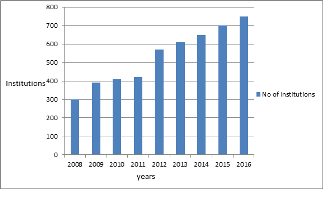
Bangkok Companies on Agriculture
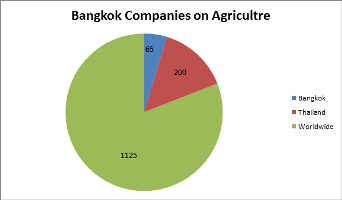
Colleges on Agriculture

Genomics Market Value
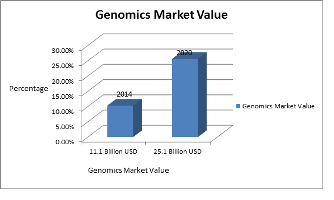
Conference Highlights
- Plant Physiology
- Transgenic Plants
- Plant Breeding
- Plant Genome Sequencing
- Plant Genomics Applications
- Plant Tissue Culture
- Plant Science
- Cereals and Crops
- Plant Pathology
- Plant Genomics in World Economy
- Plant Stem Cells
- Plant Genetic Engineering
- Seed Genomic
- Plant Biotechnology
- Plant Microbiology
- Agrotechnology
- Plant Genomics
To share your views and research, please click here to register for the Conference.
To Collaborate Scientific Professionals around the World
| Conference Date | July 03-05, 2017 | ||
| Sponsors & Exhibitors |
|
||
| Speaker Opportunity Closed | Day 1 | Day 2 | |
| Poster Opportunity Closed | Click Here to View | ||
Useful Links
Special Issues
All accepted abstracts will be published in respective Our International Journals.
Abstracts will be provided with Digital Object Identifier by


















